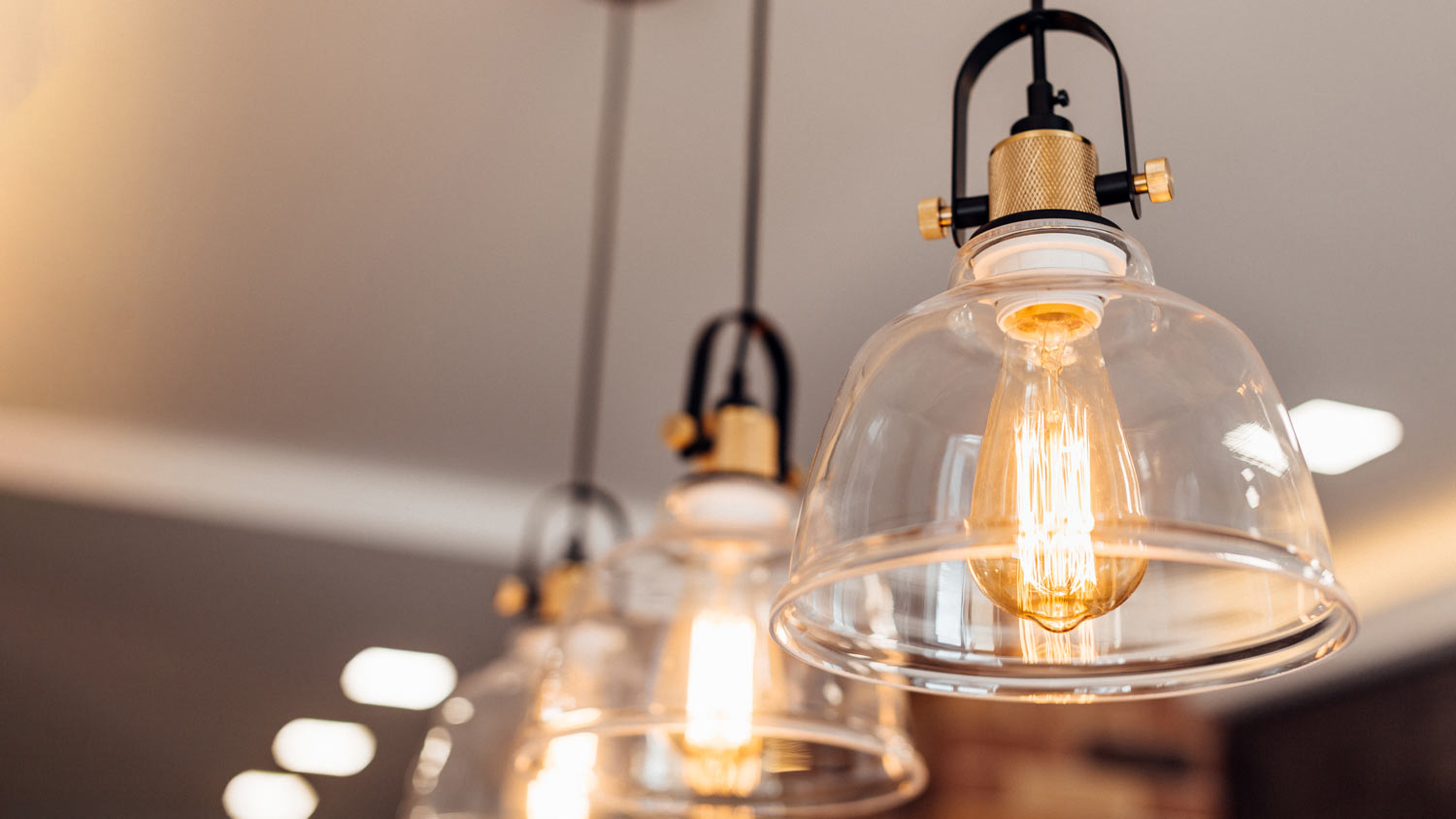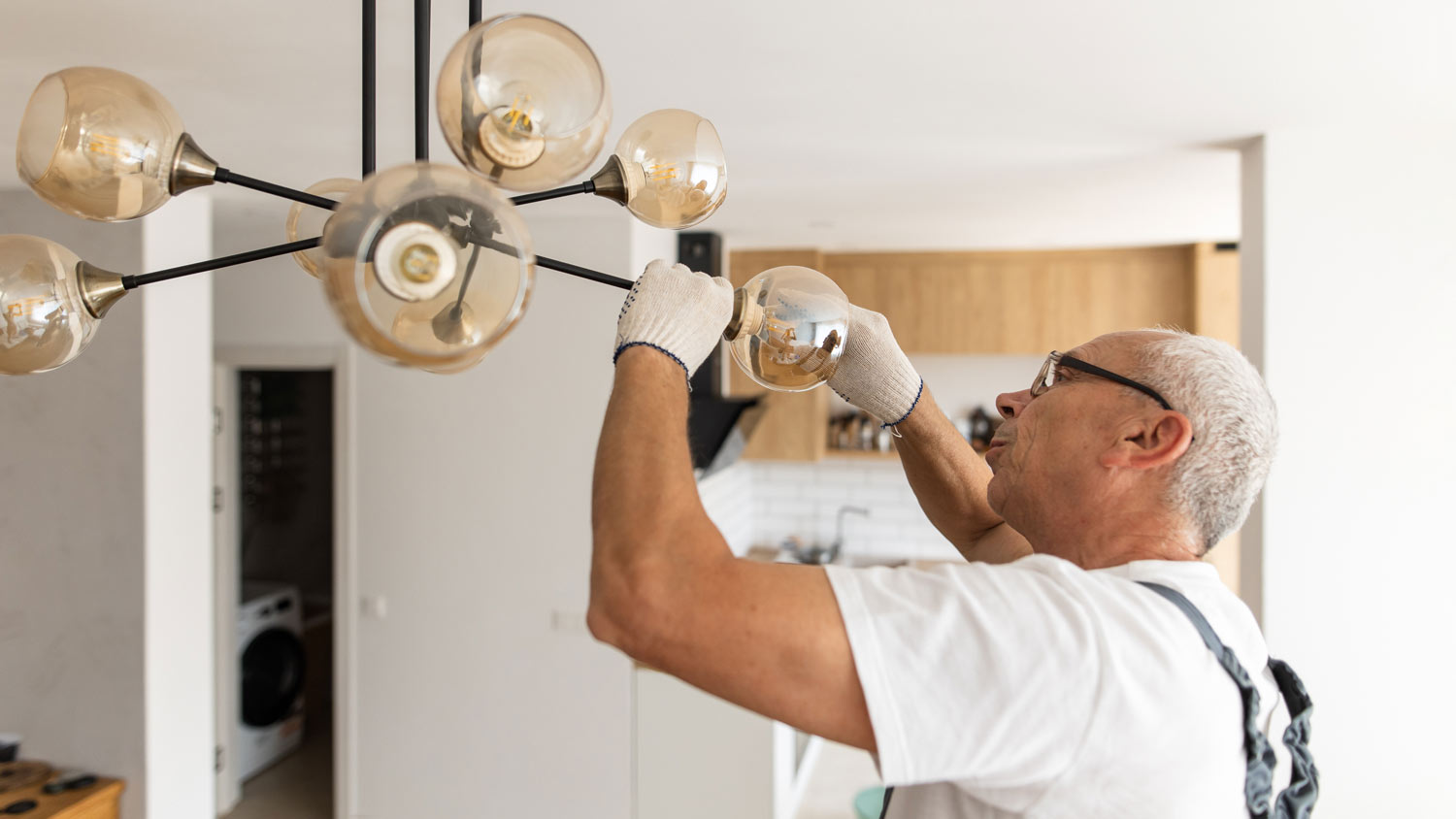
Discover the professional Christmas light installation cost, including average prices, cost factors, and tips to save on your holiday lighting project.
Illuminate your annual electricity budget


The average cost of one LED bulb is $1.24 per year.
Standard incandescent bulbs cost $7.45 per year on average.
Find your utility company’s electricity rate on your bill (cents per kWh).
Swap for energy-efficient light bulbs to save the most money.
Whether you want to budget for a new light fixture or understand your current energy use, this calculator will show you how to calculate the annual price of a light fixture. Learn how much a light costs per year, depending on the type of bulb, number of bulbs, and average usage.

Refer to the table below to estimate how much your light costs per year, using your light bulb’s wattage and the electricity rate set by your utility company. For each type of bulb, the wattage varies based on the lumens, or brightness of the bulb.
The chart is for a single light bulb and assumes two hours of usage per day, the average daily use in U.S. households. Electricity rates differ significantly across the United States, ranging from 7.18 cents per kilowatts per hour (kWh) to 42.34 cents per kWh. The average cost per kWh is 17 cents.
| Type of Bulb | Light Bulb Wattage | Electricity Rate (Cents Per kWh) | Cost Per Year |
|---|---|---|---|
| LED | 5–24 | 7.18–42.34 | $0.26–7.42 |
| CFL | 13–23 | 7.18–42.34 | $0.68–$7.10 |
| Halogen | 8–60 | 7.18–42.34 | $0.42–$30.91 |
| Incandescent (Standard) | 25–100 | 7.18–42.34 | $1.31–$30.90 |
| Fluorescent Tube | 28–96 | 7.18–42.34 | $1.47–$29.67 |
Using your wattage, daily usage, and electricity rate, apply the following formula to determine how much your light costs per year:
Cost of Light for a Year = (Bulb Wattage x Number of Bulbs x Daily Hours x 365 Days / 1,000) x Electricity Rate
Example: $3.72 per year = (10W x 2 bulbs x 3 hours x 365 days / 1,000) x 0.17 per kWh

There are a few main factors that impact the cost of a light and help you calculate how much your light costs per year.
The wattage is the power consumption of the light bulb, such as 14W or 60W. It’s listed on the base of the bulb or the light bulb box. The higher the wattage, the more energy it uses and the more expensive it is. To determine the kilowatts per hour, which is how utility companies charge you, divide the number by 1,000 to convert watts to kilowatts (for kWh).
Your utility company’s price per kWh is determined based on regional factors. Look at a recent energy bill to see your current rate, often shown as “cents per kWh.”
If the light fixture has four bulbs, the total wattage and energy use is higher compared to a single bulb.
The more hours the light is on, the more energy is used.

Whether you want recessed lighting or a new fixture with a dimmer, a licensed electrician near you can install a fixture and ensure it’s wired correctly. If you have fixtures high on the wall or ceiling, an electrician can safely change the light bulbs or swap out your fixture. The cost of hiring an electrician ranges from $160 to $540, depending on your project and local labor costs.
From average costs to expert advice, get all the answers you need to get your job done.

Discover the professional Christmas light installation cost, including average prices, cost factors, and tips to save on your holiday lighting project.

Add a wow factor to your home with a chandelier. Chandelier installation costs depend on style, location, and labor, so learn what you can expect to budget.

Discover the average wall sconce installation cost, key price factors, and ways to save on your lighting project. Get transparent, expert-backed cost info.

Discover how to hang string lights from any spot in your yard for an instant glow up that feels warm, cozy, and downright fun.

Lighting aisle feeling overwhelming? This article explains the different types of light bulbs, watts, lumens, shapes, sizes, colors, and more.

You don’t always need a pro for recessed lighting fixes. Learn how to change a recessed light bulb on your own for an easy, affordable home repair.